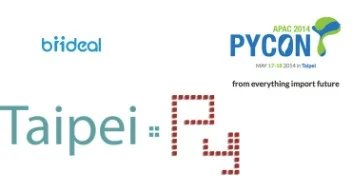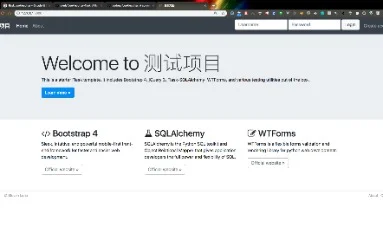Tornado Web Server
Content
- Python Libraries
- An Introduction To The Tornado Python Web App Framework
- Python Web Frameworks: Django, Flask, Bottle, Pyramid, Tornado, Web2py, Falkon
- Python,wsgi,nonblocking,flask,tornado
For the sake of consistency, let’s see how the post method looks and how it handles the self.form_data that was constructed with the BaseView. Everything else in this view method is pretty much par for the course, mirroring what we’ve already seen in Flask and Pyramid. As long as we’re modifying this BaseView object, we should address a quirk that will come up when we consider data being posted to this API.Web2py comes pre-packaged with tools allowing it to run on Google App Engine and Amazon EC2 so you can deploy it in the cloud. There’s even a built-in ticketing system that automatically raises tickets whenever your web server encounters errors. Sure, it’s a little more complex than Flask, but in a good way.
- Competitive new frameworks are of course crowding the programming market in Python, but the old guard will not easily give up its position.
- Yes it can do the job of “travel,” but short trips aren’t why you choose to use a car over a bike or just your feet.
- Although they’re both open source, Dash is more focused on the enterprise market and doesn’t include all the features in the open source version.
- Instead of working hard, I should work smart like an asynchronous program.
But if you just need a simple websocket, Django Channels is a really complex library to sprinkle in a little realtime capability into your app. With Tornado’s implementation it “keeps the easy things, easy”. This can be very useful in certain situations where you’re not concerned so much about scaling out initially.
Python Libraries
We got a list of all the lunches that have already been posted with Lunch.query.all(), and instantiated a form to let the user post their own gastronomic adventure. For simplicity, the variables are passed into the template with the same name, but this isn’t required. All the templating options we’ll see rely on a “context” that provides the dynamic information for the template to render into HTML. The simplest use case for a template would be to populate a logged-in user’s name to greet them properly.

It is as important as the choice of platform (Ruby on Rails, Python etc.) and the choice of database (postgresql, mysql etc.). The Python Web Framework landscape is quite varied and there are many different tools available to developers today. Python code, however, tends to be less error-prone because it is very short and simple (in fact, it’s often said that the average line of Python code has just five words ). This means that coding in Python is just easier than in other languages.When we use the define function, we end up creating attributes on the options object. Anything that goes in the position of the first argument will be the attribute’s name, and what’s assigned to the default keyword argument will be the value of that attribute. Because Tornado doesn’t require any external configuration, we can dive right into writing the Python code that’ll run our application. Let’s make our inner todo directory and fill it with the first few files we’ll need.
An Introduction To The Tornado Python Web App Framework
There is nothing stopping you from using both Tornado and Flask together. Flask is a web framework, where tornado is an async library. Flask servers the webpages and Tornado handles the websocket connections for us. Web2py was originally invented as a training tool with a focus on usability and ease of implementation, as it lacks project configuration files. The web2py architecture was developed under the influence of the Ruby on Rails and Django frameworks. Like these frameworks, web2py is aimed at rapid development, proclaims agreement over configuration and follows the Model-View-Controller design pattern.What if, however, your average response time takes more than a fraction of a second? What if you use data from the incoming request to start some long-running process like a machine-learning algorithm or some massive database query? Now, your single-threaded web server starts to accumulate an unaddressable backlog of requests, some of which will get dropped due to simply timing out. This is not an option, especially if you want your service to be seen as reliable on a regular basis. As it offers a lot of features out of the box (e.g. support for client and server sides, websockets, middleware, signals), Aiohttp might be used with medium-sized projects .

Both Jinja and Django templates provide a feature called filtering, where a list can be passed through a function before being displayed. A blog that features post categories might make use of filters to display a post’s categories in a comma-separated list. Just having a Python application that can respond to HTTP requests is a great start, but it’s a good bet that most of your users won’t be interested in using curl to interact with your web app. Fortunately, all three contenders provide an easy way to fill in HTML with custom info, and let folks enjoy your swanky Bootstrap frontend. The downside of the bootstrap tool not guiding users to package their apps is that novice users won’t. If a developer hasn’t packaged an app before, they’ll find themselves rudely surprised upon their first deploy.
Python Web Frameworks: Django, Flask, Bottle, Pyramid, Tornado, Web2py, Falkon
It makes use of the tornado module and tornado templates to create a program that when called will output a simple “hello world” message. Quite often in the Python web world when asked to build a web application you choose between the two most popular Python web ecosystems, Django or Flask. However, there are other really capable web frameworks out there that may be better.Here’s a comparision of new web frameworks in Python that you should consider for your next side project. Chameleon Page Templates are an HTML/XML template engine implementation of the Template Attribute Language ,TAL Expression Syntax , and Macro Expansion TAL syntaxes.Python is a general-purpose programming language, while R is focused solely on data analytics. Some data scientists prefer R for its mature libraries and more concise code. Engineers usually prefer Python, since it conforms more closely to other languages. Streamlit is a data dashboarding tool, while Flask is a web framework. Serving pages to users is an important but small component of data dashboards. Flask doesn’t have any data visualization, manipulation, or analytical capabilities (though since it’s a general Python library, it can work well with other libraries that perform these tasks). Streamlit is an all-in-one tool that encompases web serving as well as data analysis.

Tornado is often my secret weapon for specialized projects because of some its unique abilities. It’s definitely smaller than Django but comes prepackaged with a lot of little utilities that will make writing your Python web code a joy. Here are a few of its abilities that make it stand out in my mind.For beginners, developers should try micro-frameworks before seriously taking the road to Django. As Django positioned like a full-scale Python framework to run the first application you need to make some commands from a terminal. Among a huge pile of existing frameworks, those ones based on Python, clearly occupy their rightful spot.

All we had to do to tell Django-admin about our models is add two lines to wut4lunch/admin.py. Like Flask, Pyramid supports many templating languages but ships with one by default. Pyramid uses Chameleon, an implementation of ZPT templating language. Let’s look back at our first example, adding a user’s name to the top bar of our site. The Python code looks much the same except that we don’t need to explicitly call a render_template function.Yet it can be scaled extensively and support complex applications and use cases by adding required functionality as needed. It follows the philosophy that if something needs to be initialized, it should be initialized by the developer. WebSockets with the Tornado web framework is a simple, robust way to handle streaming data. I walk through a minimal example and discuss why these tools are good for the job.It uses non-blocking I/O to ensure exceptionally fast performance. Flask uses the blueprint’s concept (“blueprint”) to create application components and support common patterns within an application or between applications. Blueprints can both greatly simplify large applications and provide a common mechanism for registering operations from Flask extensions in an application. The Blueprint object works similarly to the Flask application object, but in reality, it is not an application. This is usually just a sketch for building or expanding an application. As you can probably tell from the section heading, this is where all that talk about asynchronicity comes in.The biggest difference from Django and Flask here is the templating. Changing the Jinja2 template very slightly was enough to solve our problem in Django. Not so this time, Pyramid’s Chameleon template syntax is more reminiscent of XSLTthan anything else. The hardest part was finding the right SQLAlchemy data types and picking a length for our String fields in the database.